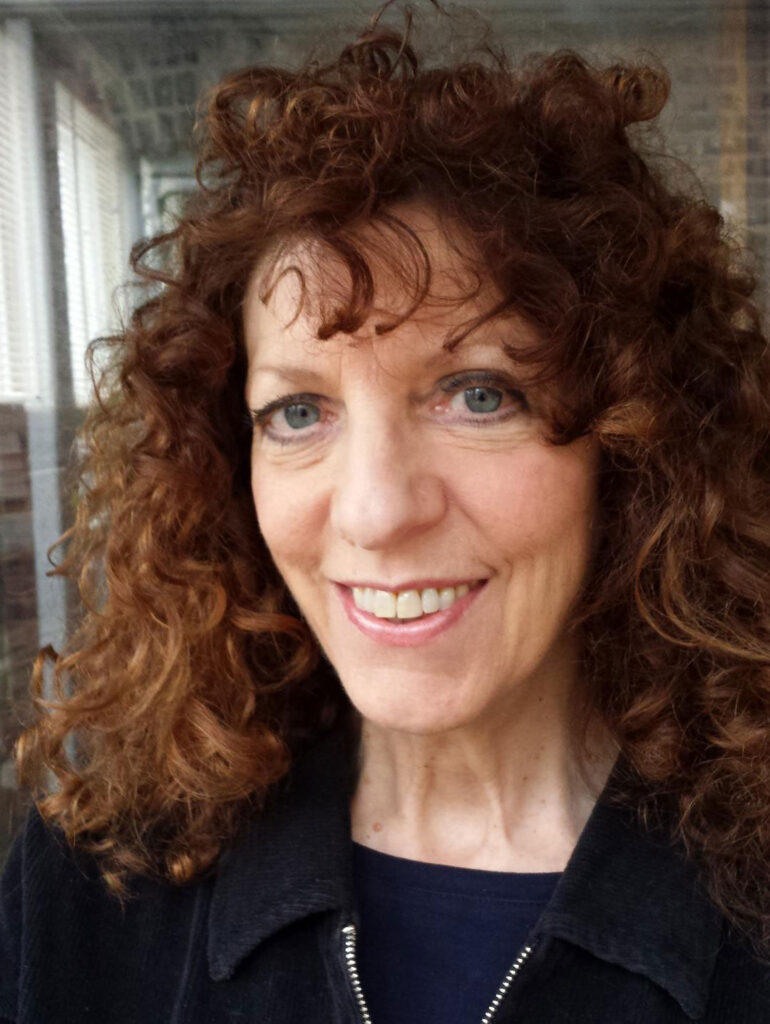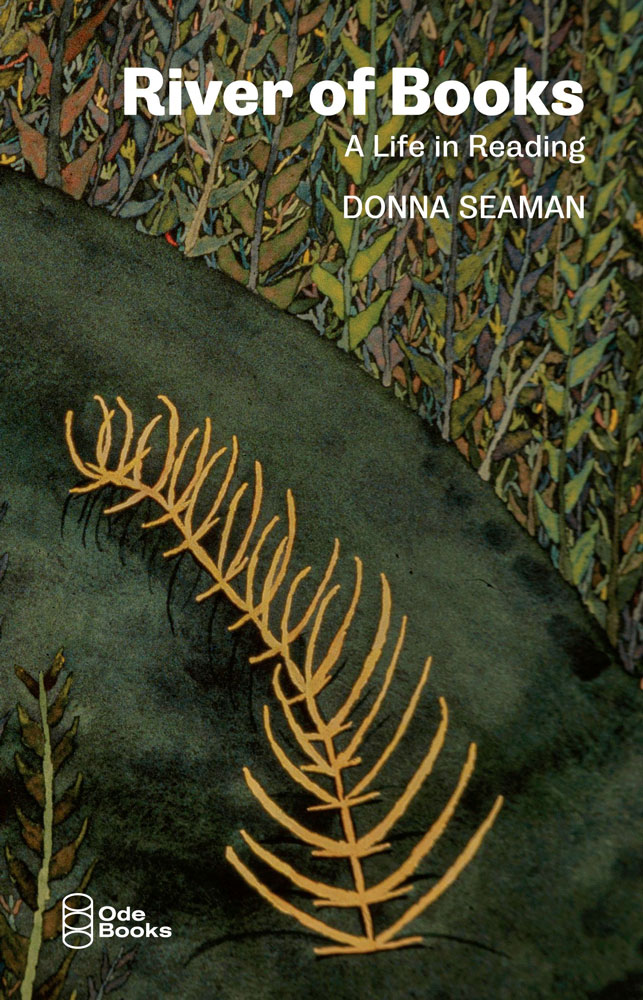Everyone’s a critic, but some critics are more critical — as in vitally important — than others. A bibliophile to best all bibliophiles, Donna Seaman is the editor for adult books at the American Library Association’s Booklist. Seaman has worked at the Chicago-based publication since 1990, orchestrating much-needed coverage for countless thousands of titles. She is also the author of the acclaimed Identity Unknown: Rediscovering Seven American Women Artists (Bloomsbury, 2017).

This November, Ode Books is publishing River of Books: A Life in Reading in which — with affection, enthusiasm, and richly detailed prose — Seaman explores her journey from a childhood in Poughkeepsie, New York, spent absorbed in such books as Chinese Fairy Tales and Little Women up to an adulthood awash in the rush of new arrivals hitting bookstores every week. The memoir is a must-read for anybody who also loves to be transported to “a realm incandescent with ideas and feelings translated into language as alive as flowers, birds, vines, dolphins.”
Seaman will appear in conversation with Women & Children First co-founder Linda Bubon on November 21 at the Swedish American Museum, followed by appearances at The Book Stall on December 4 and the American Writers Museum on December 16.
You graduated from the Kansas City Art Institute, and your book’s cover is one of your own original watercolors. How did you shift from visual art to literature, and how are the two connected?
Art and literature have been essential to my engagement with the world from a very young age. Both modes of perceiving, interpreting, and responding to life expand our perspective, understanding, and experiences. Both visual art and literature focus our attention and forge connections with nature and other people and places. I’ve always been happy reading and writing on my own, but back in high school, I also pursued the more physically active efforts required for making visual art. I liked working with my hands; I found making tangible things satisfying. But as I went through art school, I realized that my strengths stemmed more from my fascination with language and literature than with art, especially when it came to figuring out how to make a living.
Your memoir is part of a series from Ode Books that features books about books, including Paul Yamasaki’s Reading the Room, A Bookseller’s Tale — why do you think readers like reading about reading?
As one of those readers, I revel in the shared passion for books and the ways writers discuss books they’ve been affected by and why. Books about reading reinforce our sense of reading as a communal practice, as a grand conversation that spans time and space. Such books validate our habit by examining the need to read and the benefits reading bestows.
We also, unfortunately, need to advocate for reading. We’re in the midst of an epidemic of book challenges and book bans, along with efforts to limit educators’ freedom to teach the facts about history and life itself. Books that celebrate reading help us defend and protect the freedom to read just as we need to defend and protect the living world. Both the biosphere and the realm of books are endangered by those who fear truth and change.
How did you settle on the idea of rivers as your organizing principle, and how did you balance the flow from your reading life to your family and personal ones, especially the stories of your parents and sister?
I was honored to be asked to contribute a title to Ode Books. This invitation stemmed from my work as a book review editor and reviewer, but for many reasons, I didn’t feel that I could write about that in the sort of personal book I wanted to work on. Instead, I found myself thinking about how I ended up doing what I do and I thought that was a story I would enjoy telling and that, hopefully, readers would find compelling. I wanted to do a book-by-book chronicle of my early years. My intention was to focus on the books much more than on me, and I ended up writing and quoting way more material than was suitable for this title. What we ended up cutting were inquiries into books and writers’ lives and many excerpts. This led to more of an emphasis on my story, which, as life flowed, led to my reflecting on the loss of my immediate family. That said, the river as my organizing principle, as you so keenly observe, was always the catalyst for the book.
As someone who has spent many years working for the same publication and not-for-profit organization, as someone who has lived in the same small, cluttered house on a Chicago corner for a good long time, as a luckily long-married person, I’ve often thought about what it means to stay put. To live what appears to be still life, but which has been and is, in fact, a life of many challenges and ups and downs and mysteries and sorrows and marvels and change. I often repeat to myself the famous lines from the Greek philosopher Heraclitus:
Just as the river where I step
Is not the same, and is,
So I am as I am not.
This is how my life feels. And because reading is so essential to me, I picture myself as dwelling beside a river of books. This led to my thinking about how much I’ve always loved being near water, how meditative it is. I thought about the rivers I’ve known and find beautiful and evocative, and there it was. The way forward.
What are the biggest challenges facing the publishing industry today and what could be done to remedy them?
This is an enormous question! I feel compelled to say that everyone I know in the publishing world, and that includes marketing people, publicists, and editors, are profoundly devoted and hard-working, passionate and tireless. The obstacles they face are many and are rooted in the business side of the endeavor, which I know little about, beyond wincing each time an enormous media corporation devours another slightly smaller corporation or a mid-size or small press. Even though big publishing houses are full of dedicated, skillful, creative, and caring people, management calls the financial shots and that can undermine all great ideas and good intentions.
All too many books are acquired, published, and abandoned, with no real marketing support. Too many books seem rushed through the painstaking editorial process; some seem reshaped to meet standards of salability rather than artistic criteria. Writers shouldn’t have to, basically, brand themselves and their books. Books are not widgets that can be cranked out on conveyor belts. Each is a unique effort and should be treated as such. Books are not fruits or vegetables or yogurt. They don’t go “bad” after a certain sell date. By their very nature, they can and should have a long shelf life. They should be given more sustained attention.
Publishers need to truly respect and support writers and their books. There is an enormous monetary gap between commercial, high-profile titles and more literary works. One hopes that the money made on best-sellers helps support artistic novels, creative nonfiction, and short story, essay, and poetry collections.
The only power we have as publishers struggle to make profits large enough to survive corporate pressure is to read. To check out books from the library; library sales are crucial to many titles, especially books by first-time authors. And, of course, to buy books! To purchase books for ourselves and to buy books to give to others.




